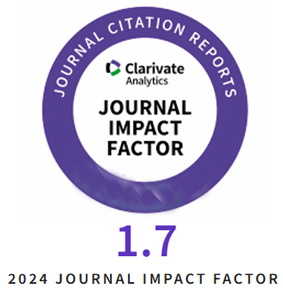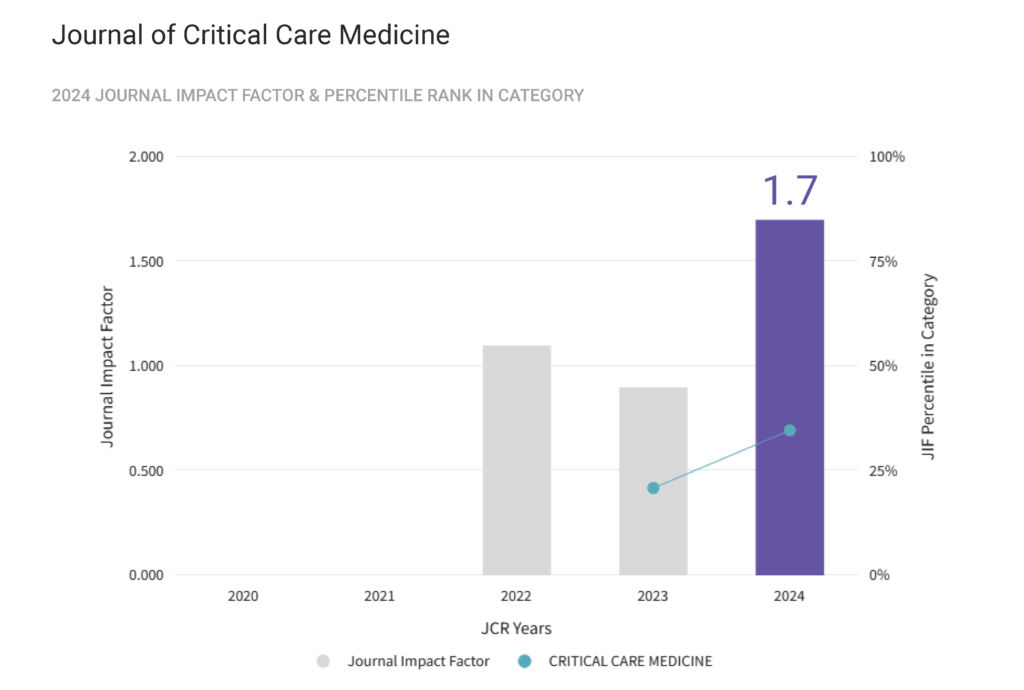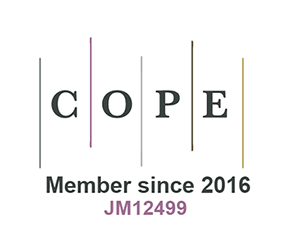Background: Major international guidelines state that norepinephrine should be used as the first-line vasopressor to achieve adequate blood pressure in patients with hypotension or shock. However, recent observational studies report that in the United Kingdom and Australia, metaraminol is often used as second line medication for cardiovascular support.
Aim of the study: The aim of this study was to carry out a systematic review of metaraminol use for management of shock in critically unwell patients and carry out a survey evaluating whether UK critical care units use metaraminol and under which circumstances.
Methods: A systematic review literature search was conducted. A short telephone survey consisting of 6 questions regarding metaraminol use was conducted across 30 UK critical care units which included a mix of tertiary and district general intensive care units.
Results: Twenty-six of thirty contacted centres responded to our survey. Metaraminol was used in 88% of them in various settings and circumstances (emergency department, theatres, medical emergencies on medical wards), with 67% reporting use of metaraminol infusions in the critical care setting. The systematic literature review revealed several case reports and only two studies conducted in the last 20 years investigating the effect of metaraminol as a stand-alone vasopressor. Both studies focused on different aspects of metaraminol use and the data was incomparable, hence we decided not to perform a meta-analysis.
Conclusions: Metaraminol is widely used as a vasopressor inside and outside of the critical care setting in the UK despite limited evidence supporting its safety and efficacy for treating shock. Further service evaluation, observational studies and prospective randomised controlled trials are warranted to validate the role and safety profile of metaraminol in the treatment of the critically unwell patient.
Category Archives: issue
Right Heart Failure as an Atypical Presentation of Chronic Type A Aortic Dissection – Multimodality Imaging for Accurate Diagnosis and Treatment. A case report and mini-review of literature
Background: An intrapericardial organized haematoma secondary to chronic type A aortic dissection is an extremely rare cause of right heart failure. Imaging studies are essential in recognising and diagnosis of this distinctive medical condition and guiding the anticipated treatment.
Case presentation: A 70-year-old male patient was admitted for progressive symptoms of right heart failure. His cardiovascular history exposed an aortic valve replacement 22 years before with a Medtronic Hall 23 tilting valve with no regular follow-up. Classical signs of congestion were recognized at physical examination. Transthoracic two-dimensional echocardiography and thoraco-abdominal computed tomography angiography, as essential parts of multimodality imaging algorithm, established the underlying cause of right heart failure. Under total cardiopulmonary bypass and cardiac arrest, surgical removal of the haematoma and proximal repair of the ascending aorta with a patient-matched vascular graft were successfully performed. The patient was discharged in good condition with appropriate pharmacological treatment, guideline-directed; no imagistic signs of acute post-surgery complications were ascertained.
Conclusion: This paper highlights the importance of recognizing and providing a timely clinical and imagistic diagnosis of this very rare, potentially avoidable cause of right heart failure in patients with previous cardiac surgery.
Characteristics and risk factors for mortality in critically ill patients with COVID-19 receiving invasive mechanical ventilation: the experience of a private network in Sao Paulo, Brazil
Introduction: The use of invasive mechanical ventilation (IMV) in COVID-19 represents in an incremental burden to healthcare systems.
Aim of the study: We aimed to characterize patients hospitalized for COVID-19 who received IMV and identify risk factors for mortality in this population.
Material and Methods: A retrospective cohort study including consecutive adult patients admitted to a private network in Brazil who received IMV from March to October, 2020. A bidirectional stepwise logistic regression analysis was used to determine the risk factors for mortality.
Results: We included 215 patients, of which 96 died and 119 were discharged from ICU. The mean age was 62.7 ± 15.4 years and the most important comorbidities were hypertension (62.8%), obesity (50.7%) and diabetes (40%). Non-survivors had lower body mass index (BMI) (28.3 [25.5; 31.6] vs. 31.2 [28.3; 35], p<0.001, and a shorter duration from symptom onset to intubation (8.5 [6.0; 12] days vs. 10 [8.0; 12.5] days, p = 0.005). Multivariable regression analysis showed that the risk factors for mortality were age (OR: 1.07, 95% CI: 1.03 to 1.1, p < 0.001), creatinine level at the intubation date (OR: 3.28, 95% CI: 1.47 to 7.33, p = 0.004), BMI (OR: 0.91, 95% CI: 0.84 to 0.99, p = 0.033), lowest PF ratio within 48 hours post-intubation (OR: 0.988, 95% CI: 0.979 to 0.997, p = 0.011), barotrauma (OR: 5.18, 95% CI: 1.14 to 23.65, p = 0.034) and duration from symptom onset to intubation (OR: 0.76, 95% CI: 0.76 to 0.95, p = 0.006).
Conclusion: In our retrospective cohort we identified the main risk factors for mortality in COVID-19 patients receiving IMV: age, creatinine at the day of intubation, BMI, lowest PF ratio 48-hours post-intubation, barotrauma and duration from symptom onset to intubation.
Intensive Care Based Interventions to Reduce Family Member Stress Disorders: A Systematic Review of the Literature
Background: Increasing awareness of the emotional impact of an Intensive Care Unit (ICU) hospitalization on patients and their families has led to a rise in studies seeking to mitigate Post Intensive Care Syndrome (PICS) for both groups. In efforts to decrease symptoms of anxiety and depression, ICUs have implemented a variety of programs to reduce family distress.
Methods: We conducted a systematic review of experimental studies which aimed to reduce stress related disorders in family members after the experience of having a patient admitted to the ICU. Multiple databases were searched for randomized controlled trials or nonrandomized comparative trials which targeted family members or surrogate decision makers. A total of 17 studies were identified for inclusion in the review representing 3471 participants.
Results: We describe those interventions which we qualitatively assigned as “not passive,” or those which actively engaged the family to express themselves, as more likely to be successful in both the available pediatric and adult literature than interventions which we identified as “passive.” Studies which described active engagement of family members demonstrated comparative improvements in symptoms of depression, anxiety, and PTSD, as well as reduced hospital costs in the case of two studies.
Discussion: This review may serve to aid in the development of future interventions targeted at reducing family stress and PICS following an ICU hospitalization.
Predictive Value of Systemic Immune-inflammation Index in Determining Mortality in COVID-19 Patients
Aim: The aim of this study was to evaluate whether systemic immune-inflammation index (SII) could predict mortality in patients with novel coronavirus 2019 (COVID-19) disease.
Methods: This two-center, retrospective study included a total of 191 patients with confirmed diagnosis of COVID-19 via nucleic acid test (NAT). The SII was calculated based on the complete blood parameters (neutrophil × platelet/lymphocyte) during hospitalization. The relationship between the SII and other inflammatory markers and mortality was investigated.
Results: The mortality rate was 18.3%. The mean age was 54.32±17.95 years. The most common symptoms were fever (70.7%) and dry cough (61.3%), while 8 patients (4.2%) were asymptomatic. The most common comorbidities were hypertension (37.7%), diabetes (23.0%), chronic renal failure (14.7%), and heart failure (7.9%) which all significantly increased the mortality rate (p<0.001). There was a highly positive correlation between the SII and polymorphonuclear leukocyte (PNL), neutrophil-to-lymphocyte ratio (NLR), and platelet-to-lymphocyte ratio (PLR) (r=0.754, p<0.001; r=0.812, p<0.001; r=0.841, p<0.001, respectively), while a moderate, positive correlation was found between the SII and C-reactive protein (CRP) (r=0.439, p<0.001). There was a significant correlation between the SII and mortality (U=1,357, p<0.001). The cut-off value of SII was 618.8 (area under the curve=0.751, p<0.001) with 80.0% sensitivity and 61.5% specificity. A cut-off value of >618.8 was associated with a 4.68-fold higher mortality.
Conclusion: Similar to NLR and PLR, the SII is a proinflammatory marker of systemic inflammation and can be effectively used in independent predicting COVID-19 mortality .
Occupational Stress and Quality of Life among Health Professionals during the COVID-19 Pandemic
Introduction: Healthcare professionals, due to the nature of their work, have always experienced occupational stress, depression and low quality of life, which have been aggravated during the COVID-19 pandemic.
Aim: A large-scale cross-sectional descriptive correlational study aimed to investigate the impact of the COVID-19 pandemic on Greek healthcare professionals’ psychological status and quality of life.
Material and Methods: The study was conducted at “Attikon” General University Hospital and the 2nd Health Region in Athens, Greece. An assessment of anxiety and depression was carried out using the Zung’s Self-Rating Anxiety and Depression Scale (SAS/SDS). To assess the participants’ Quality of Life (QoL) the Short Form Survey-36 (SF-36) was used.
Results: 147 healthcare professionals were enrolled in the study. 70.7% experienced normal stress levels, 23.8% mild, 4.8% moderate and 0.7% severe. Mild depression was experienced by 34.7%, moderate by 10.2% and severe by 1.4%, with a 53.7% showing no depressive symptoms. Women experienced higher levels of anxiety and depression (p=0.001 & 0.001 respectively), and were 5.4 times more at risk to develop anxiety [Odds Ratio (OR) 5.357, 95% Confidence Interval (CI), 1.95-14.72: p=0.001] and 3.4 depression (OR, 3.365, 95% CI, 1.59- 7.12: p=0.002). Nurses and other professionals experienced higher stress and depression levels (p=0.004 & 0.040 respectively) than doctors. Participants reporting more exhaustion exhibited higher anxiety and depression levels (p=0.001). Compared to the pre-COVID-19 era, women (p=0.001), other health professionals (p=0.001) and those experiencing more physical burnout during COVID-19 (p=0.005) reported worse physical health. Anxiety and depression were negatively correlated with most sub scales of SF-36 except social functioning and bodily pain (p=0.001).
Conclusions: Healthcare professionals’ QoL has been affected by the COVID-19 pandemic and they experience higher levels of anxiety and depression. There is a need to develop strategies to address the negative psychological impact of this pandemic on healthcare professionals.
Effective Outcome of HBOT as an Adjuvant Therapy in Patients Diagnosed with COVID-19 in a Tertiary Care Hospital – A Preliminary Study
Introduction: Hyperbaricoxygen therapy (HBOT) is breathing100% oxygen in pressurised chamber. This therapy ensures quick oxygen delivery to the bloodstream. In patients with severe COVID-19 pneumonia, progressive hypoxemia occurs. Oxygen therapy hasa significant role in its management.
Aim of the study: The objective was to study the efficacy of hyperbaric oxygen therapy (HBOT) as adjuvant therapy for reducing the requirement of additional oxygen supplementationin patients with moderate to severe ARDS diagnosed with COVID-19.
Methods: A single-centre prospective pilot cohort study was conducted ata tertiary care hospital from December 2020 to February 2021 over two months. Fifty patients with COVID-19 needingoxygen, satisfying the selection criteria, were included. Hyperbaricoxygen therapy wasgiven to all patients. The patient received30-45 minutes of hyperbaric oxygen with 15 minutes of pressurizing and depressurizing at 2.0 atmosphere absolute (ATA) with or without airbrakesas per the critical care team. Oxygen requirement, PaO2, andcondition at discharge were considered as primary outcome variables.
Results: Among the 50 participants studied, the mean age was 53.64±13.26 years. Out of 50 participants, 49(98.00%) had PaO2≤80 mmHg, and one (2.00%) had >80 PaO2. All the participants 50(100%) had PaO2 as 90 mmHg after three sittings.
Conclusion: This studyshows promising results in using HBOT to overcome respiratory failure in COVID-19. HBOT reduced the need for oxygen by improving the oxygen saturation levels.
Impact of Palliative Care on Interhospital Transfers to the Intensive Care Unit
Community hospitals will often transfer their most complex, critically ill patients to intensive care units (ICUs) of tertiary care centers for specialized, comprehensive care. This population of patients has high rates of morbidity and mortality. Palliative care involvement in critically ill patients has been demonstrated to reduce over-utilization of resources and hospital length of stays. We hypothesized that transfers from community hospitals had low rates of palliative care involvement and high utilization of ICU resources. In this single-center retrospective cohort study, 848 patients transferred from local community hospitals to the medical ICU (MICU) and cardiac care unit (CCU) at a tertiary care center between 2016-2018 were analyzed for patient disposition, length of stay, hospitalization cost, and time to palliative care consultation. Of the 848 patients, 484 (57.1%) expired, with 117 (13.8%) having expired within 48 hours of transfer. Palliative care consult was placed for 201 (23.7%) patients. Patients with palliative care consult were statistically more likely to be referred to hospice (p<0.001). Over two-thirds of palliative care consults were placed later than 5 days after transfer. Time to palliative care consult was positively correlated with length of hospitalization among MICU patients (r=0.79) and CCU patients (r=0.90). Time to palliative consult was also positively correlated with hospitalization cost among MICU patients (r=0.75) and CCU patients (r=0.86). These results indicate early palliative care consultation in this population may result in timely goals of care discussions and optimization of resources.
Renal Manifestations and their Association with Mortality and Length of Stay in COVID-19 Patients at a Safety-net Hospital
Background: Renal involvement in COVID-19 leads to severe disease and higher mortality. We study renal parameters in COVID-19 patients and their association with mortality and length of stay in hospital. Methods: A retrospective study (n=340) of confirmed COVID-19 patients with renal involvement determined by the presence of acute kidney injury. Multivariate analyses of logistic regression for mortality and linear regression for length of stay (LOS) adjusted for relevant demographic, comorbidity, disease severity, and treatment covariates. Results: Mortality was 54.4% and mean LOS was 12.9 days. For mortality, creatinine peak (OR:35.27, 95% CI:2.81, 442.06, p<0.01) and persistent renal involvement at discharge (OR:4.47, 95% CI:1.99,10.06, p<0.001) were each significantly associated with increased odds for mortality. Increased blood urea nitrogen peak (OR:0.98, 95%CI:0.97,0.996, p<0.05) was significantly associated with decreased odds for mortality. For LOS, increased blood urea nitrogen peak (B:0.001, SE:<0.001, p<0.01), renal replacement therapy (B:0.19, SE:0.06, p<0.01), and increased days to acute kidney injury (B:0.19, SE:0.05, p<0.001) were each significantly associated with increased length of stay. Conclusion: Our study emphasizes the importance in identifying renal involvement parameters in COVID-19 patients. These parameters are associated with LOS and mortality, and may assist clinicians to prognosticate COVID-19 patients with renal involvement.
Dubito ergo sum. Pathologies that can mimic sepsis
Sepsis is a potentially deadly organ dysfunction caused by a dysregulated host response to infection, with a high mortality rate [1]. Generally, sepsis is acquired in the community, and its development is slow, making diagnosis challenging. Early broad-spectrum antibiotics and effective source management improve prognosis [1, 2].
Sepsis has a huge financial impact on the health-care system; septic patient treatment in the United States alone is projected to cost more than $20 billion per year. The cost in human life is equally high; mortality rates in sepsis and septic shock are believed to be more than 10% and 40%, respectively [3]. Sepsis is one of the most prevalent causes for admission to the intensive care unit (ICU) and the leading cause of mortality in ICUs across the globe [3, 4]. [More]










